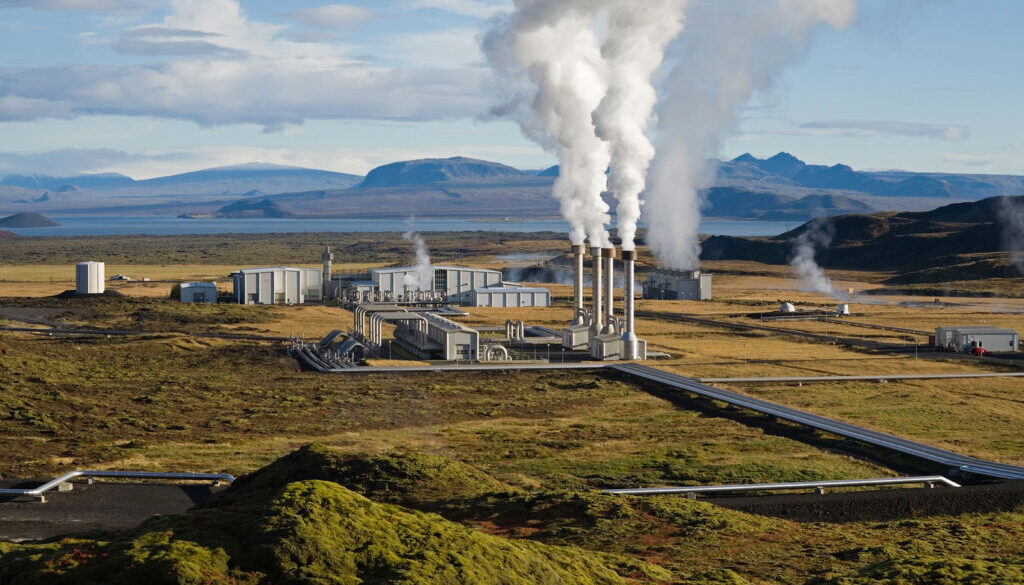Installed capacity in El Salvador is composed of 66.2% renewable energy
Table of Contents
Contact the Central American Group to invest in manufacturing in El Salvador.
Renewable energy installed capacity in El Salvador has grown 69% in the last ten years. Solar power has doubled its capacity since 2018 and already represents 10.6% of the total energy produced in the country. El Salvador is a regional leader in green energy generation.
The country’s energy matrix is changing, and renewable energy has already become 66.2% of the total installed electrical capacity. This information is according to the latest International Renewable Energy Agency (IRENA) report.
Thus, with data presented at the end of 2020, El Salvador is placed in the third position in the Central American region with the highest percentage of renewable energy in its matrix. Costa Rica leads the region with 86.8%, and Guatemala follows in second place with 69.7%. In position four is Honduras (64.6%); in fifth place is Panama with 55.8%, and in the last position is Nicaragua (45.2%).
In 2020, El Salvador had 1,507 megawatts (MW) of installed capacity for green energies. In one recent year, however, growth was only 2.24%. It must be considered that renewable energy projects take time and require a solid investment to develop them. Nevertheless, it can be seen that in the last decade, the installed capacity in El Salvador has grown by 69%, that is, increasing by 615 MW.
According to Víctor Méndez, business planning manager of the DELSUR distribution company, various tenders have been made in recent years. They were for more than 670 MW of new energy, which has implied a change in the country’s energy matrix.
Hydroelectric energy is the leading renewable in El Salvador
The IRENA report details that by type of generation, hydroelectric, which has the most capacity, has maintained the same levels since 2017, when it reached 574 MW. Geothermal power generation has maintained the same capacity since 2011, remaining at 204 MW. The power produced by utilizing bagasse has fluctuated between 298 and 294 MW in recent years, and biogas has hovered between 5 and 6 MW. However, the type of generation that has taken an exponential leap is photovoltaic (solar). In 2013, this energy source began to emerge in the market with just 13 MW installed capacity in El Salvador. In 2017 there was 126 MW. This number almost doubled in 2018, when it reached 206 MW. In 2020 power generated by solar energy exceeded 429 MW.
A significant portion of installed capacity in El Salvador consists of solar
The inclusion of solar energy in the installed capacity in El Salvador has become the second most important for the country. This mode of power represents 28.4% of total renewable energy. Solar is only exceeded hydroelectric energy, which stands at 38.1%.
The last company to join the solar market in El Salvador was Capella Solar, a subsidiary of the French firm Neoen.
Last year the company inaugurated its Albireo plant, located in Usulután. The facility has an installed capacity of 140 MW and a storage infrastructure of 3.2 MW/2.2 MWh.
Capella Solar began developing its projects in El Salvador in 2014 and, to date, has a total installed capacity of 241 MW (between its Providencia Solar and Albireo parks ).
The AES company was the one that paved the way for photovoltaic electricity generation in the country, with its Moncagua plant that currently generates 2.5 MW.
Later, in alliance with Corporación Multinversiones (CMI), AES developed Bósforo, made of 10 plants of 10 MW each. These installations represent a total capacity of 100 MW.
And in November of last year, AES inaugurated the Opico Power plant. This facility comprises 12,834 solar panels in an area of 50,000 meters and generates 5.2 megawatts ( MWp ) of solar energy.
More power generation locally boosts installed capacity in El Salvador
“The start-up of Opico Power to add installed capacity in El Salvador constitutes a new strategic investment by AES to continue to contribute to the diversification of the Salvadoran energy matrix and accelerate the future of energy in the country,” expressed a company spokesperson.
The Energy Producer Users (UPR) have also grown, says Méndez from DELSUR. He explains that his company alone has some 15 MW registered (in the country, around 50 MW) installed for self-consumption.
For Méndez, the growth of renewable generation “has had a positive impact on the energy matrix, not only in environmental impact but also allows us to reduce dependence on imported energy resources such as oil. By producing energy locally, we are ensuring that it will always be available to the user and that there will be no rationing,” he said.
On the other hand, he points out that since solar energy has developed significantly in recent years, this has meant that the cost of photovoltaic energy has decreased as installed capacity in El Salvador has risen.
Contact Us
Please use this form to contact us and we will respond as soon as possible:
Contact Us
Please use this form to contact us and we will respond as soon as possible:
Contact Us
Please use this form to contact us and we will respond as soon as possible:
Contact Us
Please use this form to contact us and we will respond as soon as possible:





